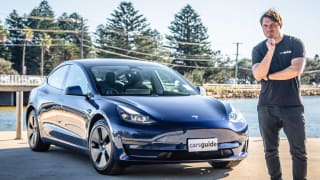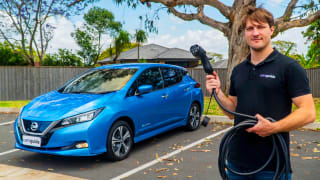There are three models for the Ioniq 6. Our entry, the Dynamiq, the mid-spec Techniq and the range-topping Epiq. There’s a theme here with the name but I just can’t quite put my finger on it…
The Dynamiq has the largest driving range of 614km, followed by the other two at 519km. Unlike the other two, the Dynamiq is a rear-wheel-drive and is $74,000, before on-road costs.
That makes it similarly priced to its rivals and the range puts it ahead of the usual ‘range’ leader, Tesla.

The features list is good with the dual 12.3-inch screens that headline the dashboard featuring most prominently. The heated front seats, auto-flush door handles, as well as wired Apple CarPlay and Android Auto add some luxury to the tech specs. But more on that below.
A colour head-up display, dual-zone climate system, 360-degree view camera, 10-way power-adjustable front seats plus a powered boot with kick-function come as standard.
To be honest, there’s not a lot of difference in the features list across all three models and you could save yourself some serious cash by choosing the already well-specified Dynamiq.
























